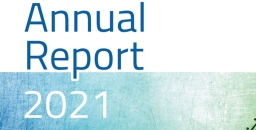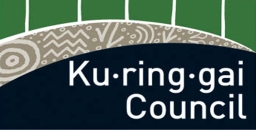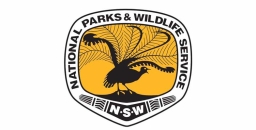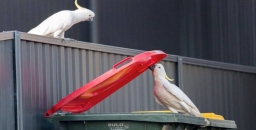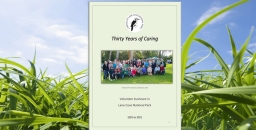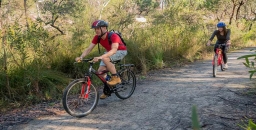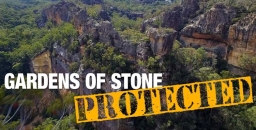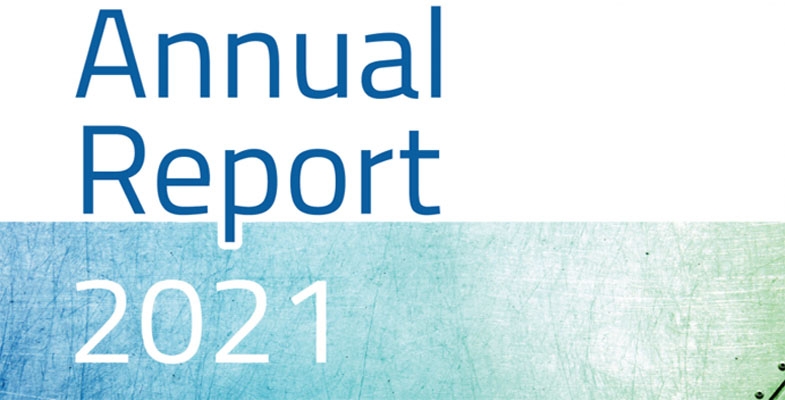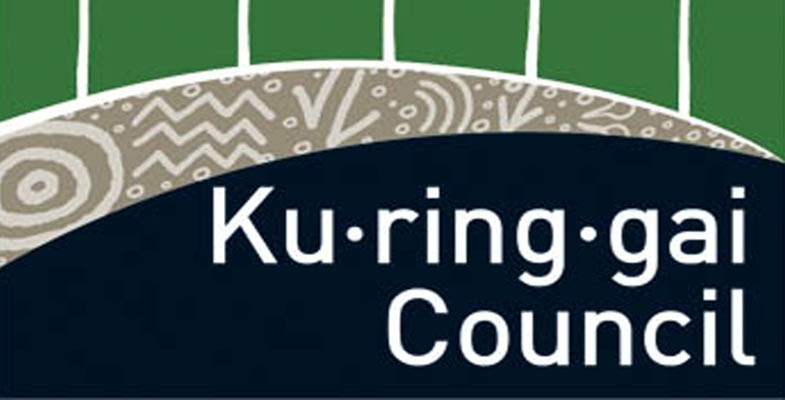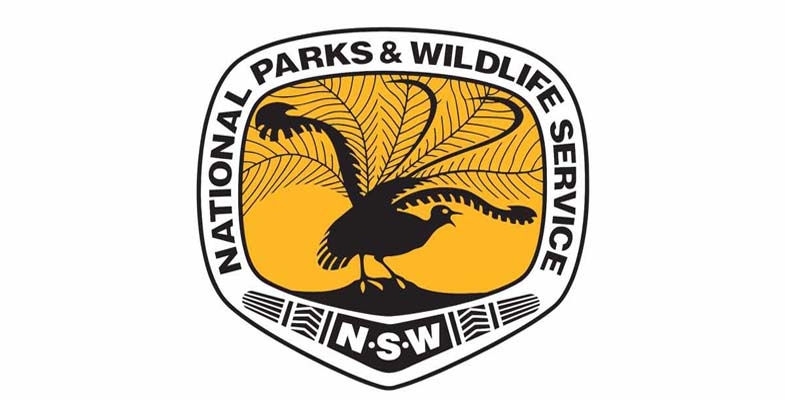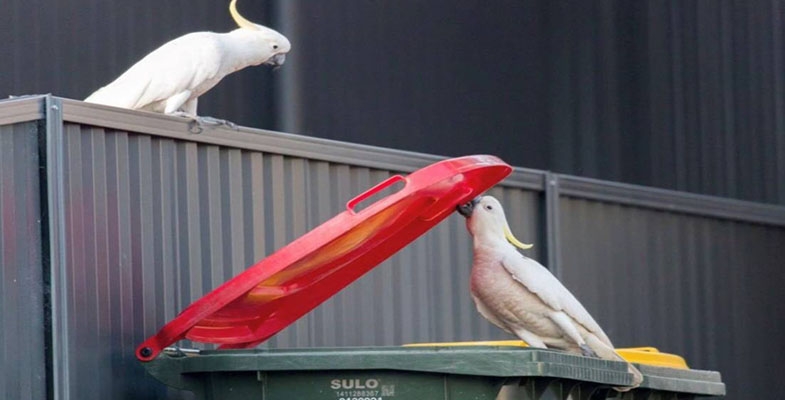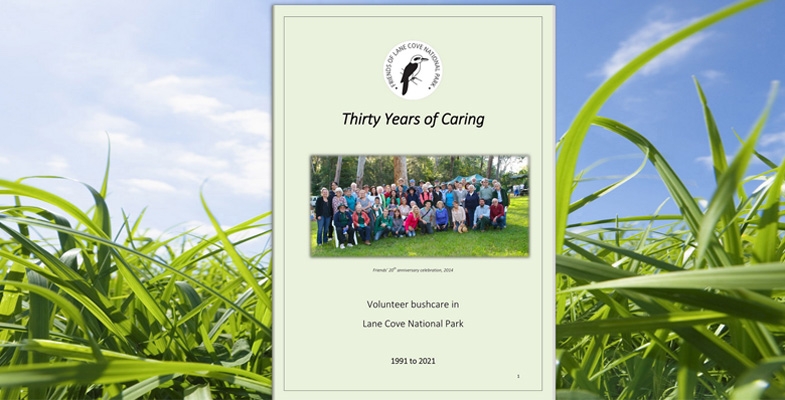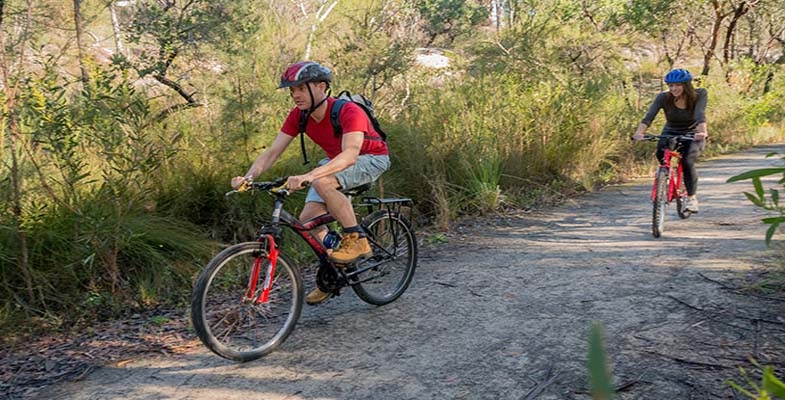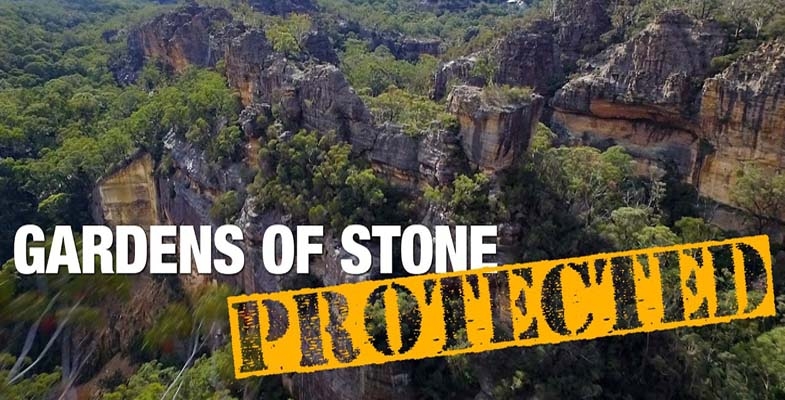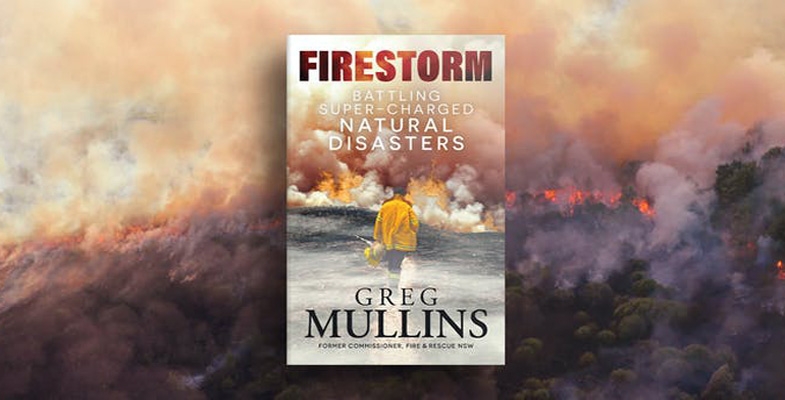STEP Matters 213
- Default
- Title
- Date
- Random
- Welcome to the annual report on the 43rd year of operation of STEP Inc. Because of the COVID-19 pandemic, 2021…Read More
- Much has been written in the press about the stalemate that developed within Ku-ring-gai Council following the ‘election’ of a…Read More
- In the last parliamentary sitting week of the year the Coalition attempted to legislate some major changes to the National…Read More
- Our highly intelligent and loud sulphur-crested cockatoos have developed a new skill, opening wheelie bins in order to raid their…Read More
- The Friends of Lane Cove National Park were planning to hold a celebration this year commemorating 30 years of volunteering…Read More
- It is good to see the Young Scientist Awards being run again this year. The winner of the STEP award…Read More
- NPWS has released a set of documents for consultation on an updated cycling strategy in national parks and reserves. The…Read More
- After 90 hard years of campaigning the NSW government has finally decided to declare some protection for the Gardens of…Read More
- A couple of months ago, I sat in on an Australian Conservation Foundation (ACF) event via Zoom for its donors…Read More
- Between July 2003 and January 2017 Greg was Commissioner, Fire and Rescue, NSW. Being a former employee is an advantage…Read More
Annual Report for the Year to October 2021
Welcome to the annual report on the 43rd year of operation of STEP Inc. Because of the COVID-19 pandemic, 2021 has turned out to be similar to 2020. Many more people have been getting out in the bush and discovering our maps and books, membership has again increased and our walks and talks program has been severely curtailed. We hope to be able to go back to normal in 2022.
On the environment front some bold decisions have been made by the NSW government but the federal government is as recalcitrant as ever. There has also been plenty of activity at the local level with councils putting out many plans and policies for consultation.
Talks
The restrictions on group activities imposed to control the spread of the COVID-19 virus have meant that we have held only one talk. In March Professor Culum Brown gave a fascinating talk about shark behaviour that highlighted the damage being caused to marine life by shark nets when there are more effective methods of shark control available.
We look forward to the Zoom talk after the 2021 AGM by Mark Schuster from Ku-ring-gai Council on balancing fire management and biodiversity protection.
Shane Fitzsimmons, Commissioner of Resilience, has agreed to give a talk but this has had to be postponed to a date to be decided early next year.
Walks
We were able to hold a few walks before the COVID lockdown in June. We hope to resume the program in February next year subject to the COVID guidelines.
We thank Peter Clarke for his enthusiastic leadership of the introductory walks program. He is not able to continue as he has moved up north. We have a new leader for the introductory walks, David Roberts, who had a great knowledge of the local area.
Membership
We are currently offering a year’s free membership to anyone who buys a book or map. There has been a good response to this offer so our membership is now over 550.
Publications
Sales of our maps have boomed. The South Turramurra Post Office that is close to Lane Cove National Park, has become a successful outlet for map sales.
The supply of Middle Harbour North maps has now run out. We plan to complete a reprint early in 2022. John Martyn is currently checking changes to the tracks shown on the map.
Committee
The STEP committee has, as always, been a great group of people to work with. We owe a huge thank you for all their efforts. Other individuals have been a great help in specialist areas of our operations.
We have had two resignations from the committee. Peter Clarke, as mentioned before, has moved away from the area. We appreciated his help with putting the newsletter onto our website and conducting walks. Anita Andrew has also decided not to nominate as she will be doing lots of travelling. She has done a great job as treasurer checking that our books and banking activities are in order.
We thank Jim Wells for doing the nitty gritty of keeping track of our finances and compiling monthly finance reports.
John Burke and Trish Lynch continue to keep Twitter and Facebook up-to-date and find lots if interesting items to add on a regular basis.
There has been a long list of documents put up by local councils for public consultation. The most significant of these were the Hornsby and Westleigh Park Master Plans and the St Ives Showground Draft Plan of Management. Robin Buchanan, Margery Street and I have put in many hours examining these documents and viewing the sites.
Since our last AGM we have made 17 submissions to local and NSW governments.
Accounts
The net cash balance at the end of the financial year has fallen by $540 despite the increase in publication sales. Revenue has fallen because we waived annual subscriptions in 2020–21 and increased donations to other environmental organisations.
The Environment Protection Fund balance has reduced as the funds are being applied to John Martyn Research Grant. We would like to be able to support more environmental projects so please contact us if you have any ideas. Our general fund can also be used to support educational projects.
Again we thank Allan Donald, Chartered Accountant, for his completion of the audit on a pro bono basis.
Newsletter
We are continuing to publish five issues of STEP Matters, each year with most members receiving a pdf version via email. Links to individual topics are also included in the email and are on our website so anyone can pick out particular articles of interest. These articles also have links to previous articles on related topics.
While the newsletter concentrates on local issues and events we also cover broader national environmental issues that affect us all. We aim to be educational but not too technical. I hope they are of interest, but feedback is welcome. Also, contributions from members about local events and developments can be published in the newsletter or on Facebook.
Environment Protection Fund
We continue to maintain the Environment Protection Fund which has deductible gift recipient status so that donations are tax deductible. The fund’s purpose is to support our environmental objectives. We received a total of $417 in donations in the past financial year.
We received a small number of applications for the John Martyn Research Grant for 2021 and hope there will be more to consider in the future. This grant supports student research in an area relating to the conservation of bushland. The award this year went to a student from the Hawkesbury Institute for the Environment at the University of Western Sydney to assist her study of phosphorus limitation on photosynthesis of a range of native plants.
Education
For many years STEP has been donating a prize in the Young Scientist Awards run by the NSW Science Teachers Association. The selection of a winning project out of a wide range of ecological issues is an interesting exercise. We have not done the judging for 2021 yet as the students have been given more time to complete their projects.
Advocacy
One of the major local issues has been the plans to install synthetic turf in many playing fields in Sydney including two sites in Ku-ring-gai and the Hornsby and Westleigh sites. We have formed a coalition, the Natural Turf Alliance, with groups in several locations in Sydney that are also fighting these projects. The group shares data about the social and environmental impacts of these fields and the low impact alternative of natural grass that can provide plenty of playing hours if planned and maintained properly.
There are many children and young adults at a loose end due to the COVID-19 lockdown. Some individuals with no appreciation of the unique and fragile bushland have been carving out tracks and building jumps. Local councils and national parks are struggling to control this destruction and educate the community about the illegal damage to habitat and wildlife.
It is great to see some positive initiatives being taken by the NSW Minister for Energy and the Environment in creating renewable energy zones and funding to help establish green hydrogen projects and incentives to change to electric vehicles. However the NSW government is still supporting new coal projects and the Pilliga gas project, a puzzling situation. How this can be consistent with their pledge of net-zero greenhouse gas emissions by 2050 is a puzzle.
Conclusion
A community group like STEP works best with many lines of communication. We enjoy a good relationship with other community groups and local council staff. Information sharing is an important part of our work. To that end we appreciate feedback from our members and reports on local issues that we may not be aware of. It is becoming harder to keep track of local developments as the local newspapers have shrunk considerably. Contributions on articles for our newsletter or help with our website are also welcome – please let us know about events and talks.
Jill Green (President)
19 October 2021
Local council elections
Much has been written in the press about the stalemate that developed within Ku-ring-gai Council following the ‘election’ of a new mayor Cedric Spencer in September. There was a 50/50 split in the vote between him and his predecessor Jennifer Anderson, so the standard process is to draw a name out of a hat.
Soon after his election Cedric Spencer’s faction attempted to hold an Extraordinary Council Meeting to review the appointment of the general manager, John McKee, only three months before the election. The opposing faction refused to attend so there was not a quorum present. This situation continued as several more attempts were made to hold this meeting including adding the item to the agenda of the October ordinary meeting. The Minister for Local Government asked for an explanation of the situation but took no further action. As a result of the boycott of the ordinary meeting several council plans will not be progressed until February 2022.
After being postponed from 2020 the local government elections were finally held on 4 December. The outcome in Ku-ring-gai looks promising with several new faces with independent views.
The final results will not be declared until 20 December but it looks likely that STEP‘s new committee member, Greg Taylor, has been successful in the Comenarra Ward. Greg has a keen interest in bushland restoration and conservation and conducts school environmental education programs. Unfortunately he has decided to resign from the STEP committee to avoid conflicts of interest with issues where STEP has made submissions.
Attempts to change National Parks and Wildlife Legislation
In the last parliamentary sitting week of the year the Coalition attempted to legislate some major changes to the National Parks and Wildlife Act without any prior consultation with stakeholders.
The environment NGOs’ opinion of the current Environment Minister, Matt Kean, has been dented. The creation of new national parks, increase in funding and climate change initiatives have been welcomed but these proposals were appalling. Fortunately the NPA, NCC and Colong Foundation were able to work with Labor, the Greens and independents in the Upper House to remove these elements from the Bill.
The good aspects of the Bill formalise prior announcements such as the Assets of Intergenerational Significance (see STEP Matters 212), the creation of the Gardens of Stone State Conservation Area and the use of digital recognition of number plates of vehicles entering national parks and requiring the NPWS to monitor the ecological health of parks.
The bad moves would have conflicted with the purposes and objectives of national parks. They would have created new methods of fund raising such as:
- providing for a trust to accept tax deductible donations to national parks
- creating and trading carbon sequestration rights in national parks
- creating and trading biodiversity credits for works carried out in national parks and reserves
These moves would allow environmental destruction outside parks to be compensated with payments being made to the NPWS. The use of biodiversity credits to offset bushland destruction outside national parks is bad policy. Extending this practice to national park land will only exacerbate the situation.
The other changes proposed would have allowed the minster to shorten the exhibition period for changes to plans of management from 90 to 28 days and approve actions that are inconsistent with an approved plan of management such as building new visitor infrastructure.
There was also a provision in the original bill that would have removed stakeholders such as the National Park Association and Local Government Association from having a role in nominating representatives to the National Parks Advisory Council and regional advisory committees. Fortunately this was removed before the Bill reached parliament.
There is about to be a reshuffle of ministerial positions in the current NSW government. The new environment minister will need to be educated about the importance our national parks and reserves in the conservation of nature and control the push for their commercialisation.
Source: National Parks Association blog post.
Cockatoo bin opening survey
Our highly intelligent and loud sulphur-crested cockatoos have developed a new skill, opening wheelie bins in order to raid their contents. This behaviour has been surveyed by the Max Planck Institute of Animal Behaviour, the Australian Museum and Taronga Zoo over the past four years and the ‘word’ is spreading.
Help the researchers learn about cockatoo bin-opening: whether you ‘have’ or ‘have not’ observed this behaviour is valuable to the study, so please participate.
Reported in three suburbs in 2018, the ‘knowledge’ has spread to 44 suburbs by late 2019. The research published in the journal Science reported differing techniques between suburbs resulting from different sub-cultures that have developed in areas that are well separated from each other.
A milestone for the Friends of Lane Cove National Park – 30 years of volunteering
The Friends of Lane Cove National Park were planning to hold a celebration this year commemorating 30 years of volunteering in the Park but COVID-19 stymied that plan. However Mike Pickles and David Meggitt have compiled a booklet documenting the achievements of the volunteers Thirty Years of Caring: Volunteer Bushcare in Lane Cove National Park.
It includes a history of the northern Sydney Bushcare movement from its beginnings in the 1960s. The techniques were formalised by publications such as Joan Bradley’s Bringing Back the Bush and Robin Buchanan’s TAFE sponsored textbook that became the reference (and still is) for all trainees.
In Lane Cove National Park, a series of working bees were held in the early 1990s and these evolved into the creation of the Friends thanks to the initiative of Nancy Pallin and Nan Goodsell. The creation of this organisation facilitated the ability to apply for government grants.
The first meeting was held in January 1994 and a week later one of Sydney’s worst bushfires occurred and 85% of the park was badly burnt. This led to a large influx of volunteers eager to help restore the park and the Volunteer Bush Regeneration Program was created. This program is still going strong.
The booklet chronicles the activities and personnel involved with the Friends, including the great support from the NWPS staff. It also provides a profile of each of the 27 Bushcare sites that are still functioning.
Young Scientist Award 2021
It is good to see the Young Scientist Awards being run again this year. The winner of the STEP award was Chloe LeMap from PLC Sydney for her project Cool the Sand, Save the Sea Turtles. Her project has demonstrated excellent background research, scientific process and initiative. We thank Gaye Braiding and Margery Street for judging.
National parks cycling strategy – submissions needed
NPWS has released a set of documents for consultation on an updated cycling strategy in national parks and reserves.
The National Parks Association will be putting out a submission guide early in 2022. Submissions may be made until 30 January.
There are three documents:
- policy statement
- outline of the strategy
- guidelines for implementation of the strategy
We are concerned with a number of aspects of these documents:
- The three documents give a very conflicted picture of priorities for mountain bike management in national parks. While the conservation purpose of national parks is emphasised the development of new tracks is being actively encouraged.
- ‘Stakeholder’ groups will be able to propose new mountain bike trail routes for which a standardised assessment method has been outlined. This is a job that should be initiated by the NPWS and many areas should be off limits.
- There is no strength in the proposals to deal with the issue of what they call unauthorised tracks. The number of tracks has increased significantly over the COVID lockdown period and this has been an intractable issue for a long time.
- There is insufficient emphasis on education of mountain bike riders about the conservation objectives of national parks and the damage caused to habitat by illegally constructed tracks and their use.
We recognise that the demand for riding on tracks, as against management trails, has increased significantly but the use of tracks and their construction has to be controlled in the same way as other activities in national parks.
A quick Google search shows that this has been a problem for many years. Attempts by the NPWS to close down illegal tracks and fine bikers found riding on walking tracks have met strong resistance.
Significance of numbers of mountain bike riders
We need to put this issue into perspective. Statistics based on surveys undertaken by AusPlay, a federal government agency, show that in 2020 in NSW, 1.8% of adults participated in mountain biking compared with 8.6% who bushwalked. The majority of mountain bikers would be riding on management trails or signposted tracks. A minority engage in challenging downhill rides such as the Gahnia and Serrata tracks in Garigal NP near Bantry Bay. In our experience of the northern Sydney region this minority are the people demanding new trails.
Is it reasonable for the NPWS to be expending so much time and their limited budget on developing and managing more facilities that will benefit such a minority? There will be limited opportunity to get a financial return from these facilities.
Conflicted picture
The first statement in the policy seems well measured:
A range of cycling experiences, including mountain biking, may be provided in some national parks and reserves managed by NPWS, where cycling can be undertaken sustainably and consistent with the conservation of natural and cultural values.
However, the strategy documents are all about increasing cycling opportunities in national parks through the creation of new dedicated tracks and formalising unauthorised tracks.
NPWS recognise that many unauthorised tracks have been created due to the demand for single track and more technical cycling experiences. As NPWS looks to invest in enhancing existing tracks, and creating new tracks on park, we will be engaging early with stakeholders to explore sustainable experiences that protect the natural and cultural values of our parks and ensure NPWS legislative requirements are being met.
The mountain biking community will relish the opportunities presented. The question is whether the NPWS can stand firm against the pressure that will be applied by the vocal biking advocacy groups and ensure that the objectives defined in the National Parks Act for the management of national parks are enforced.
Planning and assessment processes for new track proposals
The strategy guidelines set out processes for deciding whether a proposed new track or formalisation of an unauthorised track is suitable for the national park. It seems that proposals can be put forward by interested parties. This totally overturns the general principle that NPWS should be deciding where any new track could potentially be placed and areas that are totally off limits.
Under the current process NPWS does the background research into the protection requirements of the location and suitability of the route and drafts an amendment to the plan of management that will be open for public consultation. This was the process for the development of the new tracks in Garigal National Park. This will still be the case, but having the plan initiated by outside stakeholders, could make it difficult to justify refusal against strong lobbying.
The document does acknowledge that:
Not all parks will be suitable for cycling activities, and in some parks cycling experiences will be limited.
The proposal is to be assessed in stages:
- Site suitability – even pristine, unmodified bushland is not completely eliminated from the development possibility. Generally land that has been modified to some extent is a possible candidate for further consideration – see stage 2.
- Then an analysis is applied according to a list of criteria that are given a point score under three equally weighted categories:
- protection of park values and whether use will be ecologically sustainable
- an enjoyable and safe visitor experience
- construction and maintenance cost
The actual application of these criteria is highly questionable and basically incomprehensible. For example, it is possible for a proposed track to go through an area with threatened flora or ecological community. A low score is given but that is just one item that could be swamped by the other criteria. Protection of park values should outweigh the other categories.
The guidelines claim that:
A standard process to assess and enable proposed new cycling experiences in a park will provide certainty for proponents of cycling experiences on the process to be undertaken and the issues that need to be considered. A consistent approach for assessment ensures that all appropriate environmental and cultural values, as well as visitor needs, are considered.
If a proposal is acceptable under the assessment outlined above then it is assessed at a regional level taking into account higher level factors such as demand, connectivity with nearby tracks and compatibility with other users such as walkers.
The method seems to be mainly aimed at creating longer tracks that can be regarded as a ‘destination’, a visitor drawcard. Our conclusion is that the assessment method will be a waste of time. Mountain biking groups can present proposals and then why can’t the assessment be left in the hands of the NPWS?
The assessment process is not suitable for the Sydney region because the topography is most areas is too steep and incised by waterways. Only relatively short tracks could be built and the potential areas are already covered by management trails.
Tracks in Sydney cannot contribute to the local economy as they are primarily used by local residents. The two tracks built in Garigal NP cost over $1 million are only 6.5km long and can be completed in 1.5 hours according to the NPWS website.
STEP’s Position Paper on Bushland Tracks and Trails takes a much simpler approach. Basically tracks, whether new or existing unauthorised bike tracks, should not be built in high quality bushland. This applies particularly in Sydney where the national parks are compromised by their proximity to urban areas, often deeply incised by waterways, have erodible soils. These parks are already being degraded by their location and need to be carefully managed to mitigate the effects of climate change.
Response to issue of unauthorised tracks
This statement is made in the policy document:
NPWS will progressively close and rehabilitate unauthorised tracks unless identified through appropriate planning processes (e.g. plans of management) to be formalised as part of a park cycling track network. Subject to available resources and identified priorities, NPWS will also undertake community engagement and compliance activities to address ongoing illegal track building and the risks associated with the use of unauthorised tracks.
The strategy goes into a lot of detail about these ‘appropriate planning processes’ with a potential outcome that illegal tracks could be formalised, vindicating illegal activity as an outcome of strong advocacy from mountain biking groups.
Unauthorised tracks can be managed and reduced by proactively establishing cycling networks that meet both environmental and user requirements, and through establishing processes by which NPWS can prioritise and rehabilitate unauthorised tracks.
Positive experiences for cyclists and NPWS can be forged through the creation of partnerships to ensure all perspectives are considered. There are currently numerous great examples in our parks of community groups working with parks to maintain and monitor tracks and reduce unauthorised tracks.
In our experience in Sydney’s national parks, these statements are very optimistic!
Rehabilitation of unauthorised tracks
Even before the COVID lockdowns the construction of unauthorised tracks has proliferated. This was recognised as an issue back in 2011 when the previous strategy was written. NPWS just hasn’t had the resources to close down these tracks. Will this new strategy make any difference?
Walkers in Sydney’s national parks come across these unauthorised tracks all the time. Many are quite short and provide an alternative more exciting route than the official management trail or a short cut from streets to a management trail. Some seem to be built just for the fun of trying out skills at building jumps and tight curves. Often it seems the people building these get bored with the track they have built and move on to another area. We don’t often see them actually being used.
Solutions
The NPWS claims they can:
Develop a consistent and firm approach to non-compliant activities and work with user groups to develop a self-regulating culture of stewardship for the parks they enjoy.
But how many of the young illegal track builders are members of user groups? Education is inadequate and should be increased through signage and social media. Publicity about imposition of fines would help.
The culture and attitude of some mountain bike riders has to be changed so they accept that national park land is not available for their exclusive enjoyment. It is a rare asset that needs to be cared for and appreciated.
The attitude of bike riders on shared tracks also has to be changed. Too often they ride too fast to the extent that some walkers are scared to use some management trails.
Points for submissions
As STEPs primary concern is damage to bushland in our region, the main points we would like made in submissions are:
- Our local national parks are not suitable locations for the development of cycling experiences envisaged by the draft cycling strategy.
- NPWS has to make it clear in the documents that they are in control in determining where new mountain biking tracks may be built.
- More resources should be allocated to the closure and rehabilitation of unauthorised tracks.
- NPWS should encourage user groups to get their members to engage with all riders to instil a culture that regards the destruction of natural bushland as unacceptable.
- The strategy provides for NPWS to work with user groups and other land managers, such as councils. These groups should work together to develop stronger education programs about the appropriate places for developing mountain bike tracks and their use.
Gardens of Stone protected at long last
After 90 hard years of campaigning the NSW government has finally decided to declare some protection for the Gardens of Stone. The ideal would have been the creation of a national park but a state recreation area is a start. Here is some history:
- 1932, Colong Foundation for Wilderness founder, Myles Dunphy, included the Gardens of Stone in his ‘Greater Blue Mountains National Park Proposal’.
- 1985, former Colong Foundation Director, Dr Haydn Washington, published the Gardens of Stone Reserve Proposal.
- 1994 the liberal environment minister, Chris Hartcher, reserved the Gardens of Stone National Park (stage 1) after a strategic park proposal from the Colong Foundation for Wilderness while independents held balance of power in the NSW Legislative Assembly.
- 2005, the Gardens of Stone Alliance formed, consisting of the Blue Mountains Conservation Society, Colong Foundation for Wilderness and the Lithgow Environment Group to coordinate a community campaign to protect the Gardens of Stone based on a state conservation area proposal by the Colong Foundation. The campaign highlighted the damage being done to upland swamps and the pagoda formations by underground mining.
- 2019, a comprehensive visitor management plan, Destination Pagoda, was released by the Gardens of Stone Alliance to showcase the economic benefits of developing the tourism potential of the region.
- 2021, Centennial Coal withdrew their proposal for expansion of the Angus Place Colliery after persistent campaigning from the Gardens of Stone Alliance.
The total 30,000 ha of land to be protected has been drawn from several state forests and crown land. It includes threatened ecological communities such as upland swamps and box woodland and several rare and threatened species.
The campaigners have worked with the local Lithgow community, council and politicians to demonstrate the benefits of making the Gardens of Stone a tourist destination. Mining jobs will be replaced by new employment in the Lithgow area. The NSW government has come up with some financial support with $50 million for management and upgrades.
The drawcard is the amazing rock formations called pagodas that dot the landscape, with gorges, canyons and waterways winding between them. There are valleys with lush rainforest and high-country woodlands, including patches of snow gum. There are amazing wetlands that support unique wildlife like the giant dragonfly.
A state conservation area does not prohibit mining in the way that a national park declaration does. While Centennial Coal has withdrawn its proposal to expand the Angus Place coal mine, it still wants to extract coal and has submitted a new proposal to mine underground at Angus Place West. The prospect of more coal mining will be opposed strongly by conservation groups but at least the Gardens of Stone will not be affected.
The tourism developments include:
- An iconic great walk (six days) from the Wollemi wilderness through the Capertee Valley to the Gardens of Stone that will feature incredible views across the Wollemi wilderness and the ancient pagoda formations. Accommodation and purpose-built eco-cabins will be built along the way.
- Existing four wheel drive circuits will be retained.
- A 35 km mountain bike circuit.
- The Lost City Adventure project that will include Australia’s longest zip line and a spectacular elevated canyon walk.
- Upgraded roads and lookouts for the more sedate visitors
The challenge will be the potential damage from the expected influx to areas such as the Lost City and other rock formations, as well as indigenous rock shelters and other heritage. The design of these projects and management must give priority to protection of this unique area.
Haydn Washington has written about the history of the campaign, which you can download and read at your leisure History of the Campaign for Gardens of Stone from 1980 to 2021.
Feeling adrift in a sea of false hope
A couple of months ago, I sat in on an Australian Conservation Foundation (ACF) event via Zoom for its donors and supporters that promoted its latest climate change campaign. As a long-serving councillor and former vice president of ACF, I was interested to hear about their campaign plans, which they explained are based on a poll of 15,000 people who indicated a desire for firm action on climate change. However, at the end of it, I felt isolated and alone. I felt I had moved on in my thinking, while ACF has not.
The presentations by senior ACF staff were earnest and uplifting and the comments posted in response were enthusiastic and supportive. But I felt myself estranged from the event. I found myself recalling how often, over my 30 years of enthusiastic involvement with ACF, I had felt uplifted and inspired by the same style of presentations by ACF’s key personnel. Now, not so and it felt a bit like having lost a faith.
So, what has changed for me as ACF barrels along in its customary manner? It comes down to a realisation that ACF, and environmentalism more generally, is stuck with talking about the symptoms of the environmental crisis, while ignoring the underlying causes. It is also locked into a largely fruitless campaign mode that is focused on targeting marginal seats in each Federal election. This has been its style since I joined its council in the 1980s and it remains a deeply entrenched, culturally embedded modus operandi.
The ACF people are intelligent, well-meant and deeply committed environmentalists, and for that they have my great respect. But they, and seemingly their supporters and donors who joined in this event, now appear to me to be tunnel-visioned and misguided in their fervour. First, and foremost, there is the assumption that climate change is the major existential threat that ACF and the wider environmental movement must address. It is their highest priority. And second, there is the additional assumption that this threat can be averted through a political campaign focussed on key marginal seats that will somehow bring about a radically different response. I hear myself thinking, ‘same old, same old’, looking back over forty years of ACF campaigning strategy. When will the penny drop that this is a fruitless strategy?
I could have submitted a comment to the event along the following lines:
When will ACF connect its climate change and biodiversity work to a deeper sustainability agenda that encompasses population growth, consumption, economic growth and technology – the underlying drivers of imminent collapse?
That would have been a real ‘party pooper’ contribution that I am sure would not have been welcomed by the ACF organisers on the night. It probably also would have been dismissed as inappropriate or irrelevant by most of the supporters and donors participating in the event.
The reality is that these deeper and more complex issues have been either ignored or dismissed by most ACF staff for much of its existence. This is despite the efforts of a number of its elected councillors and former Presidents over many years (ranging from Sir Garfield Barwick in the early 1970s to Emeritus Professor Ian Lowe more recently), to draw attention to them. The focus within ACF staff remains on an agenda dominated by the twin environmental pillars of climate change and biodiversity. But it would be unfair to level this criticism only at ACF. The environmental movement more generally, both here in Australia and in most other Western countries overseas, has largely displayed the same myopia in framing their campaigning and advocacy efforts.
As to the reasons for this behaviour, a fellow ex-ACF councillor, Jonathan Miller, offered me recently the following salient observations:
- The internal perception that it is easier to attract public support for issues such as climate change and biodiversity than for complex and less tangible issues such as population growth, consumption and economic growth.
- The additional perception that tackling the drivers of unsustainability is more difficult conceptually, much harder to win in the long-term and that it is more difficult to identify ‘wins’ to supporters and members.
- A shift in the profile of ACF (and other ENGO organisation) activists and their collective culture from those who deeply understand and love the bush (e.g. bushwalkers and those with natural science degrees) to those with broader social issue concerns (and whom, in turn, are particularly reluctant to tackle issues such as immigration-driven population growth in Australia).
Reinforcing the first of these points, the US founder of the Post Carbon Institute, Richard Heinberg, has offered the following observation about environmentalists more generally in a recent blog (The Only Long-Range Solution to Climate Change, Museletter #343 September 2021):
It’s understandable why most environmentalists frame global warming the way they do (by targeting the fossil fuel industry). It makes solutions seem easier to achieve. But if we’re just soothing ourselves while failing to actually stave off disaster, or even to understand our problems, what’s the point?
This succinctly echoes exactly where my own thoughts have arrived at after over 40 years of involvement with environmental law and environmentalism. I have come to believe that:
- climate change is essentially a symptom (admittedly a very powerful one) of an underlying ‘growth’ disease; and
- that the current political system, which is the hand maiden of capitalism and completely in its capture, is incapable of producing an effective response to climate change, much less the deeper challenge of avoiding ecological collapse and transitioning to sustainability.
On the latter score, the efforts by ACF and other ENGO’s to scramble for the crumbs falling from the table at each, successive federal election, seem both flawed and largely fruitless. Over the years, even though ACF does not directly support any political party, it has often engaged in targeting marginal seats where the ALP may have a chance of defeating the Coalition. The relationship with the Australian Greens has remained strained. And, after watching on ABC TV this week the first episode of the series, Big Deal, which laid bare the lack of any safeguards with respect to corporate political donations, it is clear where the most powerful influences on federal politics come from.
So, this is why I am left feeling alone and isolated. Where are the voices to raise the larger sustainability agenda? What is the point of environmentalism, however well-intentioned, if it proceeds in almost deliberate disregard of this larger agenda? How can this agenda be pursued when those most likely to support it do not, or are not willing to, recognise it? And what is the point of trying to engage with the current, corrupt political system in which a large proportion of Australian citizens have lost all confidence?
My response to these questions, perhaps surprisingly, remains hopeful. There are many voices emerging globally in support of a deeper sustainability agenda, including some luminaries in Australia. Environmentalism has been a meritorious movement over the past fifty years but it now must be seen as one that is limited in its vision and incapable of promoting a deeper sustainability agenda. This agenda must and will emerge from other sources and directions. And the goal must be to promote this agenda through radical social, economic and political reforms – these will be the pathways of the transition to a sustainable future that embodies ecological resilience and a human civilisation that is living within its means.
To develop these ideas further, I am engaged currently in writing a book entitled The Great Transition: From the Anthropocene to the Ecolocene which I hope to get published in about eighteen months from now.
This article is reproduced with permission. It was published in the Sustainable Population Australia newsletter, issue #145, November 2021. It was written by Rob Fowler, Adjunct Professor at the School of Law, University of Adelaide. He was a vice-president of the ACF from 2008 to 2015.
Firestorm by Greg Mullins
Between July 2003 and January 2017 Greg was Commissioner, Fire and Rescue, NSW. Being a former employee is an advantage when he speaks out publicly because public servants are not so encouraged. He is the person who organised Emergency Leaders for Climate Action (ELCA), a group of 34 past fire chiefs and experts who implored our Prime Minister to meet with them and understand the predictions for the 2019-20 fire season. Self-funded, they eventually managed a meeting with Ministers Taylor and Littleproud after some adverse media coverage.
This is an exciting adventure story of a local young man fighting fires all around Sydney’s North Shore, until chapter four. He applied for and received a Winston Churchill Memorial Trust Fellowship, as government agencies have no funds for R&D overseas travel, and observed bushfire control in England, France, Spain, Canada and the USA.
Californians do it in style! Within hours a small town would be set up: command units, catering units, shower and toilet bocks, busloads of experienced firefighting prisoners, T-shirts naming the fire for sale; and of course water-bombing aircraft and experts form Alaska, Colorado and Florida. The Oakland Fire Department had a novel prevention strategy, namely, that homeowners with a heavy fuel load could hire a ‘goat man’ to lose his herd of goats to effectively eat the fuel.
Throughout the book Mullins notes changing weather conditions in Australia and around the world. People have to accept that what worked in the past will not suffice in the hotter, drier future. Following the 1994 fires, a fire brigade station officer brought us the community fire units so familiar to us around the suburbs.
Enabling homeowners to wet down the bush, prepare their homes and emerge after the fire to put out small fires and embers, community fire units were decisive in the 2002 fires in Lane Cove in saving houses.
It is not the ‘much-derided so-called greenies who are the real canaries in the coal mine…it’s our farmers and primary producers’ [p145]. They suffer first from climate change. The account of ELCA’s attempts to meet with the Prime Minister from April 2019 made my hair stand on end. The Murdoch press personally attacked Greg Mullins and the former Queensland Fire and Emergency Services Commissioner; the federal government held back two tranches of funding until December and January when it was, of course, too late to source additional aircraft from overseas. Even then-current Commissioner of the NSW Rural Fire Service, Shane Fitzsimmons, was vocal, and noted that the PM had not warned him of unilaterally calling out army reservists to help fight the fires.
Mullins debunks the five biggest myths promulgated on social and other media destined to deflect attention from worsening climate change: in fact, Greenies never had control of decision-making on hazard reduction burning; we have not had weather conditions like this before; arsonists did not cause those fires; grazing in national parks does not reduce fuel loads - cows don’t eat many branches, twigs, bark, eucalyptus leaves and bark; we have not had worse fires before. Mullins then tells what the experts really said, basically that climate change is exacerbating fire danger.
He gives short, medium and long term directions to save ourselves. Some are as obvious as mandatory smoke alarms; cigarettes that self-extinguish in dry grass; and sprinkler systems in aged care facilities.
Unfortunately the book has no index. However, dates and names are precise; there are 109 references as well as appendices on factors affecting fires, fire dynamics, and finally, a word on how the ANZACs might view our disregard for facts.
Reviewed by Margery Street

